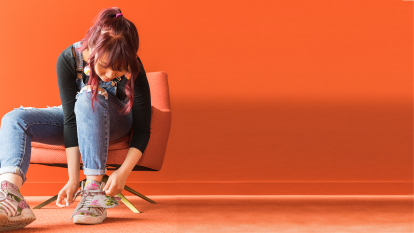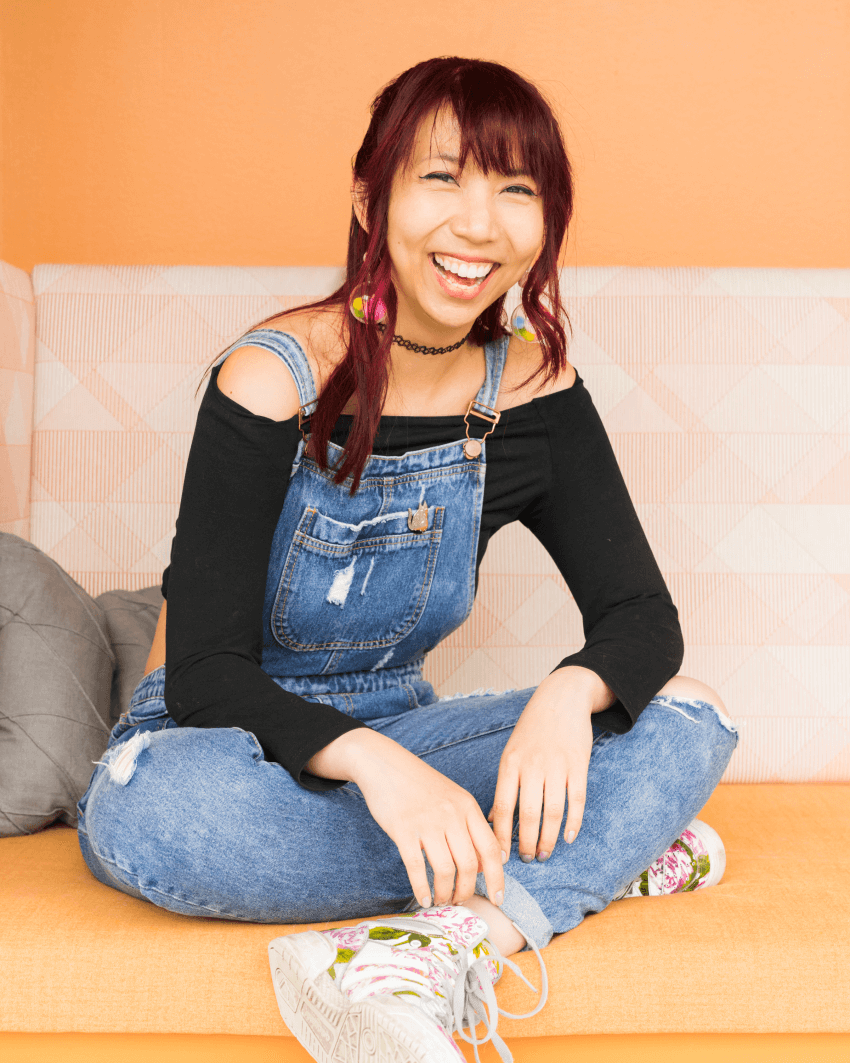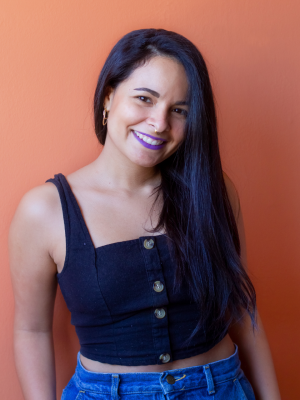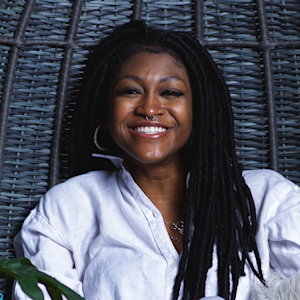Working at Shopify
Katrina started working at Shopify in 2016. She began as a product designer before working her way up to senior and staff designer. “I’m now a UX manager leading a wonderful gang of devs and UXers in Shopify’s Ecosystem team,” she says.
What exactly is ecosystem UX?
“Ecosystem UX is one of the most energizing problem spaces that I feel grateful to work in,” says Katrina. “It’s focused on the design of network effects and overlapping systems.”
In her role, this means focusing on how to help merchants customize their Shopify store with a range of apps, themes, and integrations to make their business be truly their own.
“The fact I get to work on the platforms and surfaces that make that possible is really fulfilling for me,” says Katrina. “It’s important to me to see the work I do make a real difference in a person’s livelihood and independence.”
A typical day for Katrina at her UX job is a mix of:
- Doing user research through both qualitative and quantitative methods - everything from studying click patterns and heat maps, to doing a quick SQL query to get a median number of app installs for our userbase, to calling merchants and app developers to talk to them directly about their problems and needs
- Translating insights into useable forms: wireframing, mockups in Figma, project briefs that cover the data driving decisions, prototyping
- Supporting her reports and mentees across everything from honing their product decision making to improving their design craft
Outside of her day job, Katrina also offers her time coaching other designers and startup founders. “Instead of being paid for my time, I ask that the companies I mentor donate to a charity that supports opportunities for underrepresented folks,” she says.
Tips For First-Time Freelancers
Katrina has worked as a freelance designer since 2014. While she’s spending more of her creative energy nowadays at Shopify, she shares some helpful tips for those looking to start freelancing for the first time after bootcamp:
“I advise actually looking for contract work that goes from 1-6 months, where you don’t need to necessarily structure the projects yourself so much as bring your whole self and creativity and skill to an existing problem and company structure,” she says.
This longer contract work gives you more time to practice your newly learned skills, and "try on" different company sizes/structures so you can see where your passions are - and what other talents you can unlock!
Tips for UX Designers
Katrina shares what she calls her two main Cs: Curiosity and Critical thinking:
Curiosity
Think about asking questions as a skill, something that can be honed like a finely-pointed surgical tool:
• the best UX comes not just from asking why 5 times, as Simon Sinek so wryly guided, but also how 5 times
• embrace the framework of the Jobs to Be Done exercise, which is an incredibly timely and evergreen way of weighing user needs in any situation, beyond any demographic or persona
This will help you quickly sketch ideas that cut to the real core of the problem, rather than its surface symptoms.
Critical thinking
Develop your own Swiss army knife of methods to source a range of data to inform every UX decision. Skills that would improve data literacy include:
• a little bit of SQL and Python to get dashboards and make sense of large datasets and databases
• a little A/B testing methodology and a willingness to see everything as an experiment
• a little proactive Google-hacking







